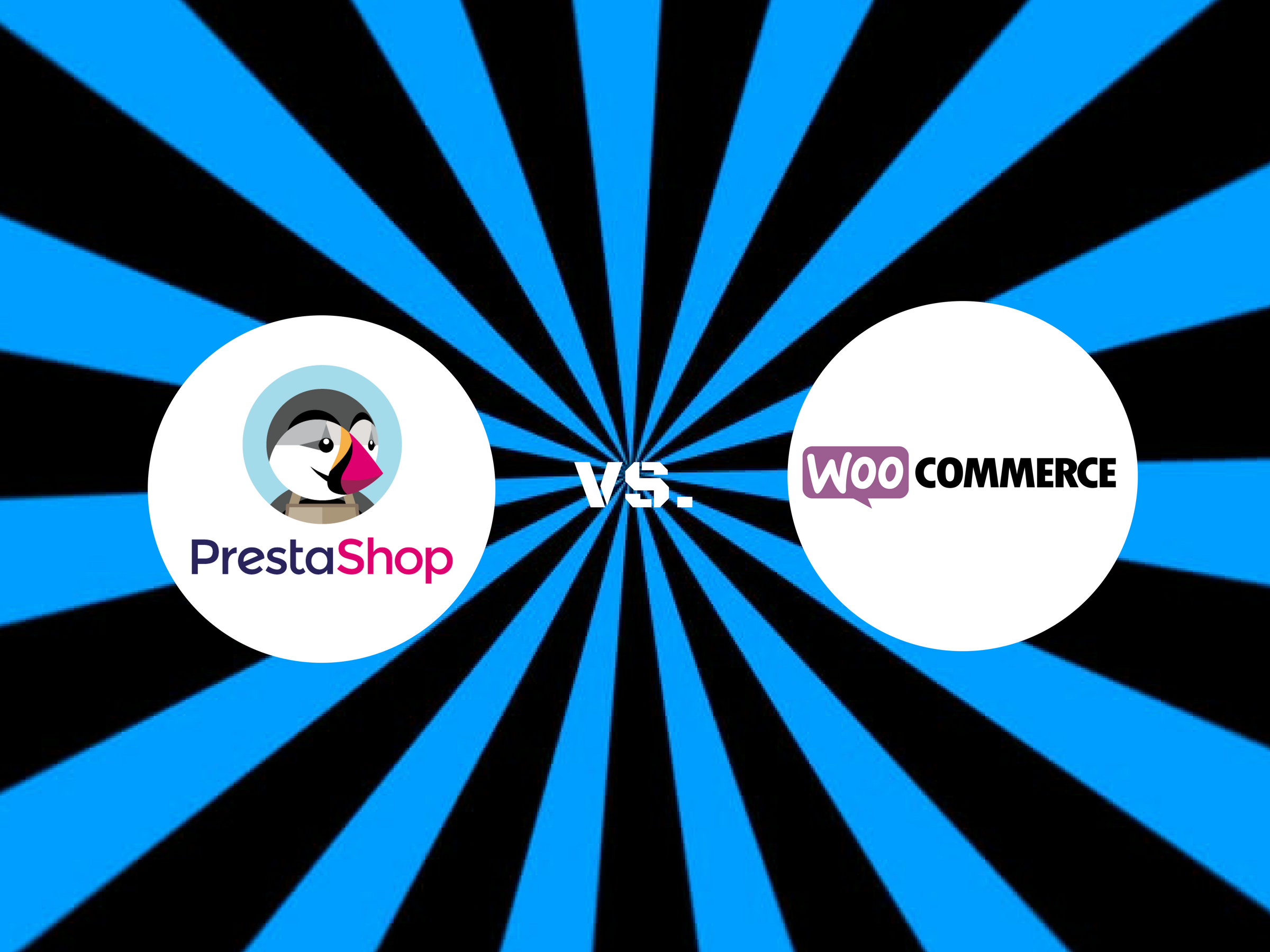There are many tools to get started in online sales but the 2 most commonly used open source solutions today are WooCommerce and Prestashop. Be careful not to be confused: WooCommerce is an e-commerce plugin for WordPress, Prestashop is an e-commerce platform. Both solutions are aimed at medium-sized shops, so you will have to turn to a more robust solution like Magento if you manage multi-shops or if you have several thousand products.
Installation
Prestashop, from the installation, is e-commerce ready whereas, WordPress is not at all. With this latest CMS you will have to both familiarize yourself with the basic concepts of WordPress and then learn how to use WooCommerce which is nothing but a WordPress extension. It should not be forgotten.
Prestashop is multilingual
Prestashop is multilingual from the start. The CMS is translated for you in over 40 languages, basic. The CMS also embeds a kind of translation module accessible in backoffice (far from optimal, but has the merit of existing).
On the other hand, to completely translate your WooCommerce shop, you will need to understand the basics of translating WordPress-based sites, understand .po / .mo files and install an additional extension such as WPML
The Market Shares
Worldwide, WooCommerce, designed in 2011, is well ahead of the list with almost a million online e-commerce sites and nearly 8 million downloads. Prestashop, launched in 2007, still globally, on the other hand, represents less than 10% of the market share.
More basic features
Without going into details, Prestashop offers more attractive options to the catalog, product features, logistics, promotional codes or shopping cart rules. This is one of the reasons why WooCommerce will be preferred for e-commerce purports to be more refined.
On the other hand, WooCommerce experts will tell you that you can do everything you can do with Prestashop by installing some WooCommerce extensions. Even though adding extensions and keeping them up to date takes time, it may be a WooCommerce desire to keep the core of its CMS lighter. But let’s leave it to Prestashop.
Flexibility
On the level of flexibility, WordPress is unbeatable. Prestashop is a good tool to make an e-commerce shop but it stops there. With all the WordPress plugins available, you will be able to personalize your shop and your site at leisure: form, integration of social networks, email marketing, live chat, promo codes, photo galleries, sponsorship system … All these plugins are rather stable and support generally ensures.
More alternative payment methods
Even if WooCommerce offers many popular payment methods, there are even more addons on Prestashop, allowing you to install alternative payment methods in a few clicks. For example, being a HiPay customer, you will find that there is an official / free HiPay module for Prestashop and not for WooCommerce, regretfully.
A structure that potentially welcomes more products
Without having done extensive study on this subject, it is obvious to me that without special optimizations, Prestashop will be able to handle more products than WooCommerce. It will also be better adapted to multi-store e-commerce projects.
Indeed, the structure of WooCommerce is that of WordPress, a CMS designed at the base for blog articles with categories, tags and not many more things. To be able to go beyond the simple blog with this CMS, developers of plugins such as WooCommerce overexploit the structure of WordPress to store data of all types in a restricted number of MySQL tables. It’s not pretty pretty all that, but WordPress, we like it anyway.
All the WordPress experts will agree that, in view of this observation, the links between the different tables / database fields are perfectible, especially with regard to performance (duration of MySQL queries, all that …). A lot of data is stored in serialized format, making WordPress extremely flexible and it does not really have a negative impact on a database of a few thousand items. On the other hand, this will increase the load of your server if you ambitionner a shop with several tens of thousands of products. Concerning Prestashop, it is easier, because from the beginning, it was designed for large-scale e-commerce shops.
Design and content
Prestashop has an official marketplace to find your themes, all very e-commerce oriented. With WordPress, you have thousands of themes, but the difference stays in this: it will be much easier to customize a WordPress theme (especially thanks to shortcodes) than a Prestashop theme that mixes html and php in the same files.
Creating content with WordPress: you can, for example, easily create a blog on your site. It’s also possible with Prestashop but it’s not for that! You will need to buy a blog module or create your blog elsewhere, which is not the most comfortable solution.
Natural reference
As we saw earlier, websites developed with WooCommerce have an online store but can also have important textual content, which is great for your position on Google. The most used plugin is Yoast SEO, it is free and perfect. So at the SEO level, WooCommerce is ahead of Prestashop.
Cost
WooCommerce and Prestashop are both free. However, you will need additional plugins when you go to create your shop. This is where the difference between the two products is made. WooCommerce offers more than 30,000 free plugins, while the bill climbs quickly with Prestashop. For example, embedding a Like button for Facebook is free with WordPress, it costs $45 at Prestashop. Some plugins cost several hundred dollars at Prestashop against a few tens at WooCommerce.
We advise you to list the functionalities and to make an estimate before choosing one of the 2 solutions.
Updates
Updating WordPress and WooCommerce is relatively easy. Some bugs or compatibility problems may occur, but as the products have been well developed at the base, this is rare and the problems are minor. On the other hand, major problems occur regularly during Prestashop updates.
Support
The popularity of WooCommerce allows you to benefit from a large community of developers (therefore a number of themes and plugins that is growing) and a wide support if you encounter problems.
There is no official Prestashop support. Its help forum is very correct but it can not compete with the power of the WordPress community. In addition, Prestashop’s new commercial policy, which favors its own resources, tends to scare away members of the community.
Conclusion
If you want your website to be more than a simple e-commerce store, our choice is WooCommerce which offers more possibilities to generate content on your site and thus improve its positioning on the search engines. At the design level, you will also have more flexibility, not to mention the cost, unbeatable!
On the other hand, if a simple online store is enough for you, you can always turn to Prestashop.
You too, let us share your preferences! We hope that this article has been useful to you, do not hesitate to share it on social networks. If you have any questions, ask them in the comments below.




